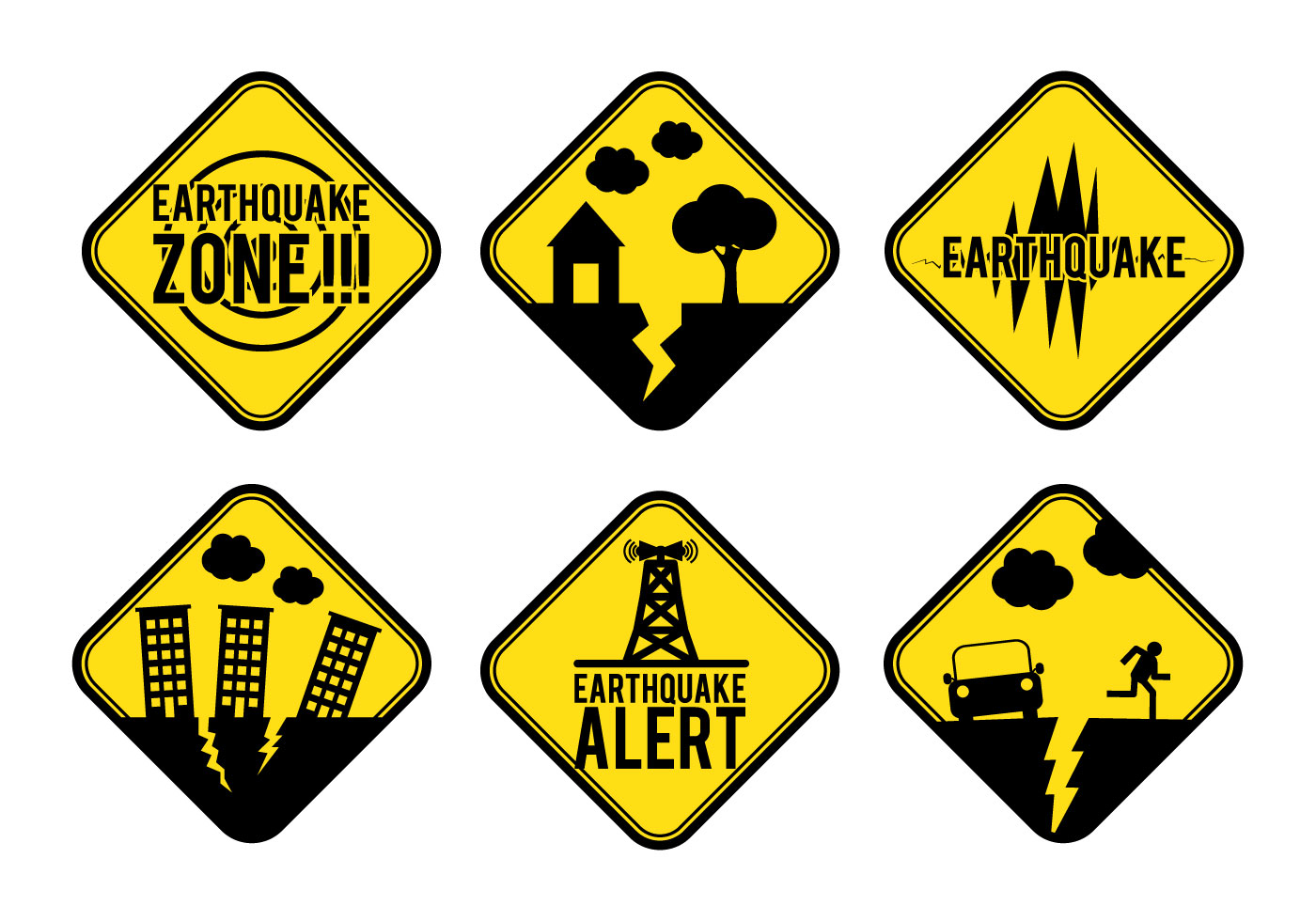Earthquake Alert - Understanding the Warning Signs

Introduction to Earthquakes
Earthquakes are a powerful reminder of the dynamic forces that shape our planet. They are a sudden release of energy that creates seismic waves, causing the ground to shake, sometimes violently, and can have devastating consequences.
What Causes Earthquakes?
Earthquakes are caused by the movement of tectonic plates that make up the earth's crust. These plates are in constant motion, sliding over the more fluid mantle below, and can become stuck at their boundaries. As the plates continue to move, the edge of the plate that is stuck becomes increasingly stressed, causing the rocks to deform and eventually break.
The Buildup of Energy
Friction causes energy to build up as the plates move past each other, leading to a shockwave - an earthquake. This energy release can be massive, causing the ground to shake, and can have a profound impact on the surrounding environment.
What Happens Before an Earthquake
Earthquakes are complex phenomena, and understanding the warning signs can help mitigate their impact. While earthquakes can't be predicted with certainty, there are underlying processes that occur before they strike.
Stress Buildup and Plate Movement
The Earth's crust is composed of tectonic plates that constantly move in different directions. As these plates move, stress builds up at their edges, creating areas of increased tension. This stress accumulation is the primary driver of earthquake activity.
Friction and Pressure Buildup
Friction between the plates slows down their movement, causing stress to build up over time. As the plates continue to move, the pressure increases, creating a potentially volatile situation. The longer the plates are stuck, the more pressure builds, leading to a greater release of energy when the earthquake finally occurs.
Energy Release and Shockwaves
When the stress becomes too great, the plates will suddenly move, releasing the stored energy as seismic waves. These shockwaves travel through the Earth's crust, causing the ground to shake, sometimes violently. The release of energy is what we feel as an earthquake.
Warning Signs of an Impending Earthquake
While earthquakes can be unpredictable, there are some potential warning signs that may indicate an impending earthquake. It's essential to note that these signs don't guarantee an earthquake will occur, but being aware of them can help you prepare and take necessary precautions.
Unusual Animal Behavior
Animals have been observed exhibiting unusual behavior before an earthquake strikes. This can include:
- Snakes leaving their nests or becoming agitated
- Dogs barking or whining incessantly
- Cattle becoming restless or fleeing
- Birds flying erratically or making unusual sounds
Changes in Groundwater Levels or Unusual Sounds
Changes in groundwater levels or unusual sounds can also be indicative of an impending earthquake:
- Unusual changes in water levels or flow rates in wells, springs, or streams
- Strange noises, such as rumbling, hissing, or booming sounds
- Unexplained changes in water temperature or color
Small Tremors or Earthquakes in the Days Leading Up to a Larger Event
In some cases, small tremors or earthquakes can occur in the days leading up to a larger event. These can be:
- Small earthquakes or tremors that may not be strong enough to cause damage
- A series of small quakes that occur in a short period
- Unusual seismic activity in an area that is not typically prone to earthquakes
It's crucial to remember that these warning signs don't necessarily mean an earthquake will occur, and not all earthquakes exhibit these signs. However, being aware of these potential indicators can help you prepare and take necessary precautions to ensure your safety.
Preparing for an Earthquake
Create a Family Earthquake Safety Plan
Developing a comprehensive earthquake safety plan is crucial to ensure you and your loved ones know what to do during an earthquake. This plan should include:
- Contact information and a meeting point outside the home
- Evacuation routes and emergency exits
- Designated person to help children, seniors, or pets
- Practice drills to ensure everyone understands the plan
Secure Your Home and Furniture
To minimize damage and risk, take the following steps:
- Secure heavy furniture, bookshelves, and televisions to walls or floors
- Hang heavy objects away from beds and couches
- Store flammable liquids and chemicals in a well-ventilated area
- Consider retrofitting your home to make it more earthquake-resistant
Assemble a Disaster Kit
A well-stocked disaster kit can help you and your family survive for at least three days. Include:
- Non-perishable food and water (at least one gallon per person per day)
- First aid kit with essential medical supplies
- Flashlights, batteries, and a battery-powered radio
- Whistle to signal for help if needed
- Important documents and cash
Staying Safe During an Earthquake
Earthquakes can be terrifying and unpredictable, but knowing what to do during one can greatly reduce the risk of injury or harm. Here are some crucial steps to take to ensure your safety:
1. Stay Calm and Drop to the Ground
In the event of an earthquake, it's essential to remain calm and drop to the ground immediately. This will help you maintain balance and reduce the risk of being knocked over or injured by falling debris. Take cover under a sturdy piece of furniture, such as a table or desk, to protect yourself from falling objects.
2. Stay Inside if Indoors, and Outside if Outdoors
If you're indoors during an earthquake, stay inside and away from windows, doors, and heavy objects. If you're outdoors, move to an open area, away from buildings, power lines, and other potential hazards. This will help minimize the risk of injury from falling debris or collapsing structures.
3. Avoid Standing Near Windows, Doors, or Heavy Objects
Windows, doors, and heavy objects can be hazardous during an earthquake. Windows can shatter, doors can swing wildly, and heavy objects can fall, causing injury. Stay away from these potential hazards to ensure your safety.
After an Earthquake: What to Do
An earthquake can be a traumatic experience, and knowing what to do after it strikes can help minimize damage and ensure safety. Here's a comprehensive guide on what to do after an earthquake:
Immediate Response
Once the shaking stops, take a moment to assess your surroundings and take the following steps:
Check for Injuries and Provide First Aid if Needed
Check yourself and those around you for injuries. Provide basic first aid if needed, such as stopping bleeding, immobilizing broken limbs, and administering CPR if necessary. Move injured individuals to a safe location, if possible.
Check for Damage to Water, Gas, and Electric Lines
Inspect your home and surrounding area for damage to essential services:
- Water lines: Check for leaks, cracks, or other damage. If you suspect damage, shut off the main water valve.
- Gas lines: If you smell gas or suspect a leak, open windows, shut off the main gas valve, and evacuate the area immediately.
- Electric lines: Be cautious of downed power lines, and avoid standing water or flooded areas.
Evacuate if Instructed to Do So by Authorities
Pay attention to evacuation orders from local authorities, such as emergency management officials or law enforcement. If instructed to evacuate, do so promptly, taking essential items like:
- Water (at least 1 gallon per person per day)
- Non-perishable food
- First aid kit
- Flashlights, batteries, and a battery-powered radio
- Important documents (e.g., insurance policies, identification)

















Comments ()